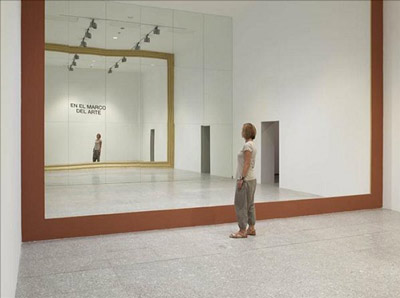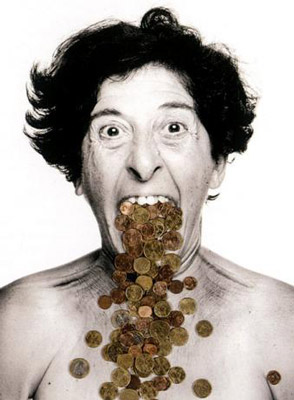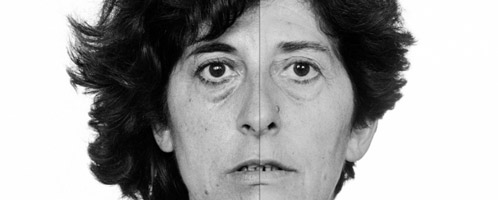
Spanish artist, pretty-well known as one of the most active representatives of performance, inaugurated a solo show at the Galician Center of Contemporary Art on July 6, which had been previously exhibited (in 2011) in ARTIUM (Vitoria) and Es Baluard (Palma).
Rosa Olivares is the curator for Esther Ferrer. En cuatro movimientos, to be open to the public through September 30 at its new venue. The exhibition is as anti-conventional as the work itself. It doesn’t try to be anthological or retrospective, but exploring each of the great topics tackled by the artist in her proposal: time, infinite, repetition and presence.
For the curator, these four elements come together in one: time. And this is precisely the first element of the exhibition, since her photography series Autorretrato en el tiempo and Autorretrato en el espacio (created between 1981 and 2009), as well as El hilo del tiempo installation and documentation of some of her performances.
Her interest in explaining the infinite occupies the most visual part of the exhibition, with series dedicated to prime numbers and Pi number with their decimal infinites; while the repetition takes the third core, where she reflects on the impossibility of identically reproducing any action. Something similar can be felt in the space aimed at the presence, where En el marco del arte piece is reconstructed, an artwork exhibited by Ferrer at 1999 Venice Biennial: spectators go in and out the frame just as it were a door; it’s the frame that frames the art that frames nothing.
 The exhibition includes a catalogue edited by Accion Cultural Española (AC/E, organizers of the event in the three cities) with texts written by Rosa Olivares, David Perez, Sergio Rubira, Tom Johnson, Alberto Sanchez Balmisa and Margarita de Aizpuru.
The exhibition includes a catalogue edited by Accion Cultural Española (AC/E, organizers of the event in the three cities) with texts written by Rosa Olivares, David Perez, Sergio Rubira, Tom Johnson, Alberto Sanchez Balmisa and Margarita de Aizpuru.
Esther Ferrer (San Sebastian, 1937) has spent forty years carrying out a systematic, rigorous and methodic work in terms of knowing the world, through performances, photography, installations and objects. In the early 1960s, she created, along with painter Jose Antonio Sistiaga, the first Free Expression Workshop and one experimental School in Elorrio (Biscay). In 1966, she joined Walter Marchetti and Juan Hidalgo in ZAJ Spanish group of performance and contemporary music, famous due to its radical position. She was awarded the National Fine Arts Prize in 2008.
CGAC Centro Gallego de Arte Contemporaneo
Rua Valle Inclan
15704 Santiago de Compostela
www.cgac.org
Sources: http://elpais.com/ http://www.esbaluard.org











